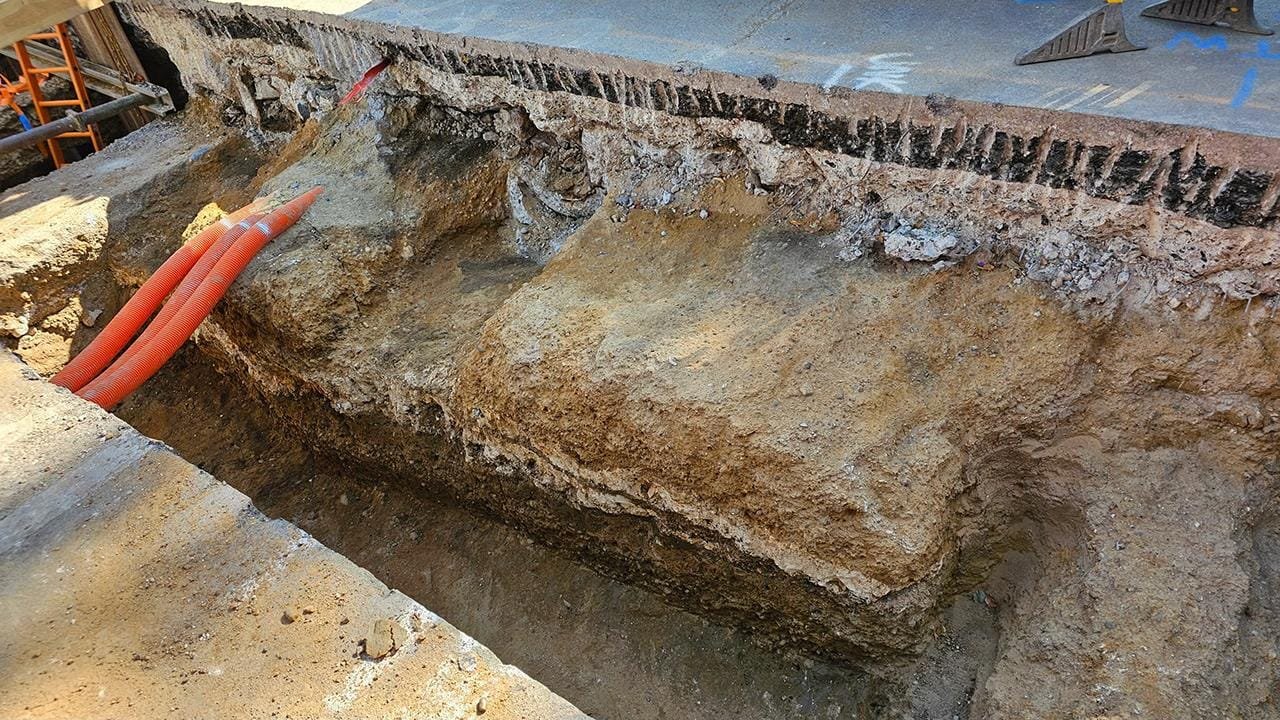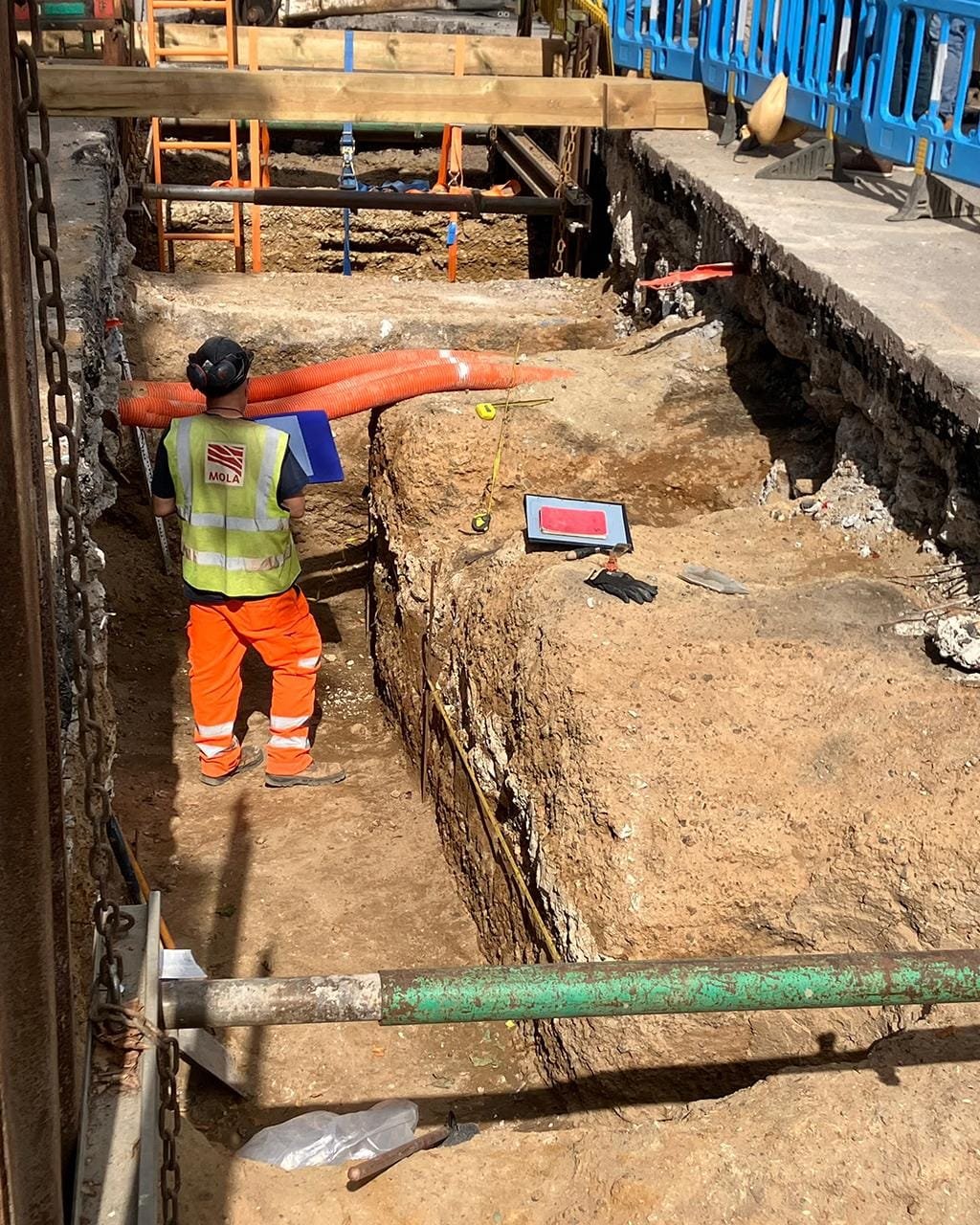A major discovery has revealed a well-preserved section of Watling Street, an ancient Roman road, beneath the modern Old Kent Road in Southwark, southeast London. Archaeologists from the Museum of London Archaeology (MOLA), working in collaboration with Veolia, RPS Consulting, and Southwark Council, uncovered the remains during excavation work for the expansion of Southwark’s low-carbon heat network.
 The ancient road was built shortly after Rome’s invasion of Britain in CE 43. Credit: MOLA
The ancient road was built shortly after Rome’s invasion of Britain in CE 43. Credit: MOLA
The unearthed section of Watling Street, constructed shortly after the Roman invasion of Britain in CE 43, provides physical evidence that this historic route survives directly beneath its contemporary counterpart. Measuring 5.8 meters (19 feet) wide and 1.4 meters (5 feet) high, the road comprises distinct layers of construction. It features a compacted gravel foundation sealed by two layers of chalk and topped with compacted sand and gravel. The road’s original surface, likely made of the same materials, has since been lost, but the modern road’s base sits directly on the Roman structure.
Watling Street was a pivotal route in Roman Britannia, connecting the port towns of Dover, Richborough, Lympne, and Reculver to Londinium (modern London). From there, it stretched northwest through Verulamium (St. Albans) to Viroconium Cornoviorum (Wroxeter). The newly discovered section lies south of the junction of Old Kent Road and Ilderton Road, aligning with historical records of its course.
Dr. Chris Constable, Southwark Council’s in-house archaeology officer, explained, “In the planning for this project, we’d expected to solve this question, but the extent of survival of the road is remarkable. We hope this project will answer some other archaeological questions in the borough.”
 Excavations of Old Kent Road in London. Credit: MOLA
Excavations of Old Kent Road in London. Credit: MOLA
Gillian King, director of archaeology at RPS Consulting, said: “The intact section of Roman Watling Street directly under the current Old Kent Road has redrawn the Roman road map for Southwark and informs on Roman construction techniques generally. It is a key finding for archaeological research for London.”
Dave Taylor, MOLA project manager, highlighted the road’s resilience: “It’s amazing this section of road has survived for almost 2,000 years. There has been so much activity here over the past few hundred years—from sewers to power cables, tramlines, and of course the building of the modern road—so we’re really excited to find such a substantial chunk of Roman material remaining.”
The discovery reflects the layered history of Old Kent Road, a thoroughfare that evolved from a Roman roadway to a medieval pilgrimage route and now serves as a hub for sustainable urban development. Notably, the road was famously depicted in Chaucer’s Canterbury Tales and has continued to feature in modern culture.
To honor this significant archaeological find, Southwark Council plans to install a commemorative sign near the site on the Old Kent Road railway bridge.
More information: Southwark Council / Museum of London Archaeology





